Syn.: Pachypodium drakei Costantin et Bois, Pachypodium rosulatum var. delphinense H. Perrier, Pachypodium rosulatum var. drakei (Costantin et Bois) Markgr., Pachypodium rosulatum var. stenanthum Costantin et Bois
Family: Apocynaceae Juss.

Distribution: Endemic to Madagascar, found in the west and south of the island, in the provinces of Mahajanga and Toliara. It is a variable species and several infraspecific taxa have been recognized – P. r. subsp. gracilius occurs in southern central Madagascar, subsp. bicolor in a single locality in the west of the island, subsp. cactipes broadly represented in the south and subsp. makayense, which was described only in 2004.
Ecology: It grows in dry grassy and shrubby habitats, in stony and rocky slopes, to an elevation of about 800 m above sea level.
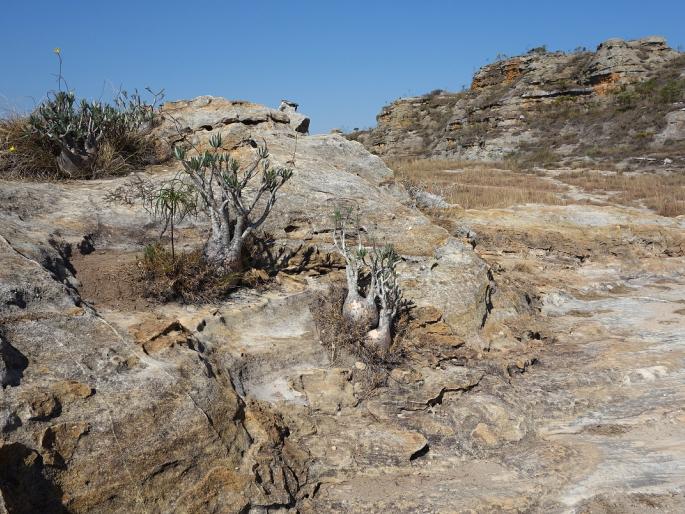
Description: Succulent, caudiciform shrub, up to 150 cm tall. Stem short, stout, branched, with brown prickles. Leaves in a dense rosette at the tip of the branch, sessile, oblong, 3–8,5 cm long and 1–3.5 cm wide, obtuse, dark green, leathery, thinly tomentose above, densely tomentose beneath. Flowers 6–8 in a dense cyme at the summit of a tomentose peduncle; bracts small, lanceolate; calyx is bell-shaped, densely hairy; corolla pentamerous, yellow. Fruits are 6–20 cm long.
Threat and protection: This species is protected by the Convention on International Trade in Endangered Species of Wild Fauna and Flora (CITES).
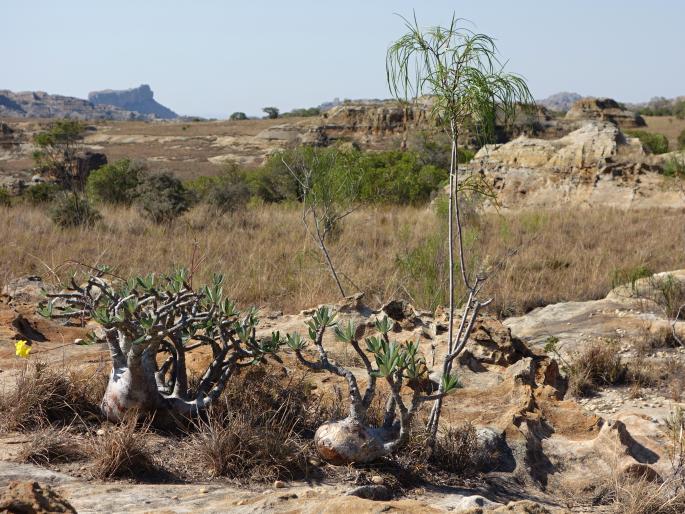
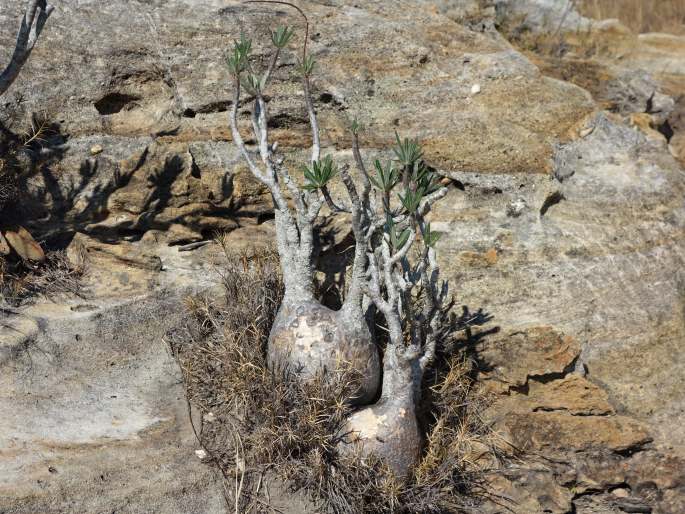
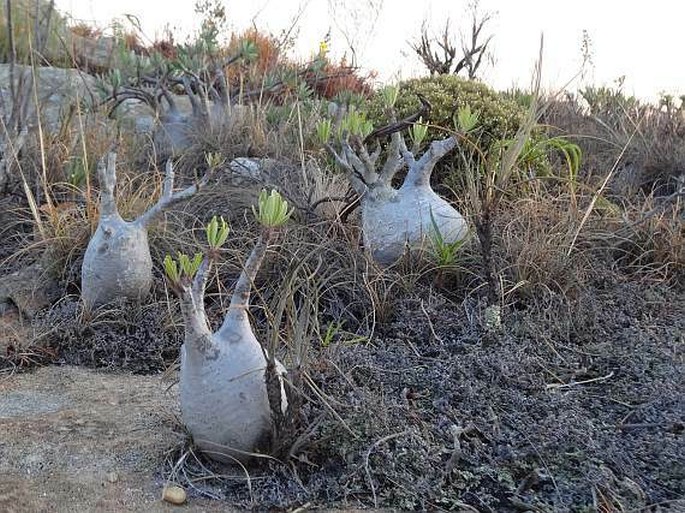
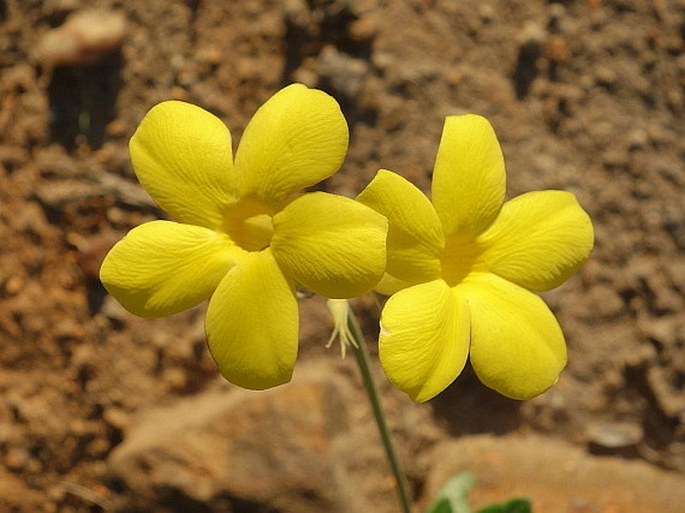
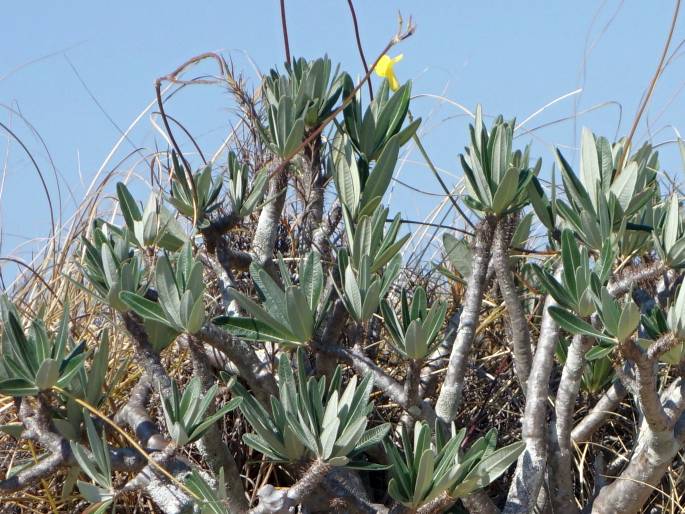
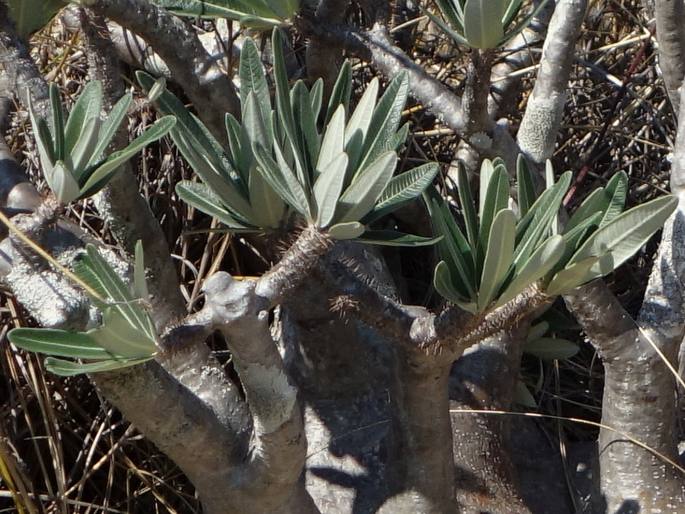
These images were taken in Madagascar, Isalo NP (by Ljuba Procházková, November 1, 2014).


